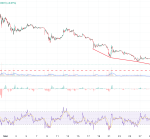This article is an on-site version of our Moral Money newsletter. Sign up here to get the newsletter sent straight to your inbox.
Visit our Moral Money hub for all the latest ESG news, opinion and analysis from around the FT
Greetings from Washington where the Financial Times is about to hold its US Weekend Festival. This year I am moderating a special panel on the backlash to environmental, social and governance themes, with Roy Swan from the Ford Foundation and Zeynep Ton from MIT; there will be a lot to discuss given the degree to which Republicans keep raising the stakes in the anti-ESG fight — to the consternation of some US corporate boards (and, of course, the wider world). Email me with questions to ask.
Meanwhile, in today’s newsletter we look at a striking example of public-private partnership that has just emerged, and which might spark debate at the World Bank as its new leader Ajay Banga arrives at the helm; doubly so since Emmanuel Macron, the French president, is due to host a summit with Mia Mottley, leader of Barbados, in Paris next month to promote reform in global financial architecture. We will be writing more about this so-called Bridgetown Initiative in the coming weeks.
And check out our story below, which gives a new (more optimistic) slant on how artificial intelligence is changing the business world. Or for more cheer, look at the future of sustainable fish. As ever, let us know what you think. (Gillian Tett)
In recent months we have written extensively about the World Bank — and the widespread criticism it has faced from environmental activists and US Democratic politicians regarding its perceived failure to finance the green transition in poor countries. And now that Ajay Banga has been formally announced as the Bank’s new head, replacing David Malpass, expectations are sky-high that the institution will soon unveil some big policy changes — and that Banga will work his magic to push these through.
He will face a monumental challenge to deliver on these hopes, particularly as a Bank outsider. But as the reform debate bubbles on, it is worth widening the lens beyond the World Bank, to see what other multi-development banks are doing.
Take the European Bank for Reconstruction and Development. Unlike some other MDBs, it has seen the volume of “blended finance” deals (ie those that use public funds to de-risk private investments) rise slightly in recent years, albeit from a low base. And this week it unveiled a new twist: a joint project between the EBRD, the EU and the emerging market asset manager ILX to support “sustainable development, particularly in climate-smart solutions, digital transformation and financial inclusion” in eastern Europe.
The idea is that the projects will be guaranteed by the EU, supported and organised by the EBRD, and ILX — which is mostly backed by Dutch pension money — will invest alongside it. Strictly speaking, this is not classic “blended finance”, since the ILX private sector investment is ring-fenced; but it is a striking variation on the concept. And although the original project is a mere $300mn in size, it could be scaled up in the future — if it works.
“[This] sets down a new marker in development finance,” said Valdis Dombrovskis, European Commission executive vice-president, who hopes this will be “a new model that can inspire other international financial institutions and private investors to step up sustainable and green investment”. More specifically, since the EU has now embarked on a “Gateway” strategy, which aims to make $300bn investments in green project by 2027, it is eager to attract private funds with projects like this.
Of course, if developing nations are to receive the support they require to tackle climate change, blended finance projects will eventually need to involve trillions, not millions, of dollars. And the question of how to get those trillions moving remains a very tricky issue, which will be a major topic for discussion at next month’s summit in Paris to discuss Mia Mottley’s “Bridgetown Initiative”. But the EBRD-ILX deal at least shows that experimentation is heating up. That is a good thing. (Gillian Tett)
US technology giants have been big winners in the sustainable investing movement over the past few years, and dominate the top spots in most environmental, social and governance funds.
But now the tech behemoths face a clean energy reckoning as their artificial intelligence products devour increasingly huge amounts of electricity.
In a comparison of four models used for natural language processing in AI, GPT-3, the tool created by OpenAI, consumed the most energy and spewed the most carbon dioxide into the atmosphere, according to a Stanford University report published this year. (And GPT-3 has already been superseded by a still more powerful model.)
Microsoft — the most widely held stock in ESG funds — has invested $10bn in OpenAI, fuelling an AI race among technology giants.
“If artificial intelligence is going to scale at the level that is being talked about in headlines today, the two biggest things that are required are more data centres around the world, and very, very significant increases in electricity to power those data centres,” Connor Teskey, president of Brookfield Asset Management, told investors this month.
Data storage providers are also rushing to offer products that save energy and can keep emissions down for AI users.
Pure Storage, which makes storage systems for data centres, is helping Meta build an AI supercomputer. Meta chief executive Mark Zuckerberg has said the company expects to roll out new AI products in the months ahead.
Pure Storage argues that its solid-state storage drives can cut energy use and cooling needs when compared with conventional spinning hard disks.
“Our job in this world is to make the storage and data management footprint as power-efficient as possible,” said Robert Lee, Pure Storage’s chief technology officer.
Some technology companies have already identified data storage as a problematic source of carbon. CrowdStrike, a cyber-security company, has said it is seeking to place data centres closer to renewable energy supplies. At game-maker Activision Blizzard, 71 per cent of its data centre electricity consumption comes from renewable energy and the company will only move into new facilities that are run on 100 per cent clean energy, a spokesman told me.
Lawmakers are also taking notice of the emissions from data centres. Representatives in Oregon this year proposed a bill that would require these facilities to cut emissions by 60 per cent by 2027.
The bill failed to pass this year, but as AI draws increasing scrutiny to this issue, regulations hitting data centre emissions are about to become more common. (Patrick Temple-West)
If you thought that being a pescatarian automatically gave you moral high ground over carnivores, think again: as a new FT piece shows, the fishing industry has a spotty sustainability record. But efforts are under way to change this. Read more in this interactive story.
Join us in London, or online, for the third annual Moral Money Summit Europe on May 23-24. Leading investors, corporates and policymakers will come together to discuss what needs to happen next to unlock a more sustainable, equitable and inclusive economy.
FT Asset Management — The inside story on the movers and shakers behind a multitrillion-dollar industry. Sign up here
Energy Source — Essential energy news, analysis and insider intelligence. Sign up here















